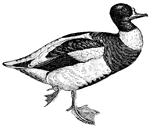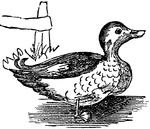
Sea Dove Bill
"Alle. Sea Dove. Size small. Bill very short, stout, and obtuse, as well as high at base, the sides…
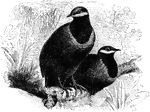
Blue-headed Quail Dove
"Starnaenas cyanocephala. Blue-headed Quail Dove. Crown rich blue bounded by black; a white stripe under…

Carolina Dove
"Zenaidura carolinensis. Carolina Dove. Mourning Dove. Wild Dove. Upper parts, including middle tail-feathers,…
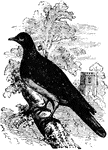
European Ring Dove
Columba palumbus. European Ring Dove. Wood Pigeon. Plumage is gray with a pinkish-purplish breast and…
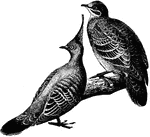
Doves
An illustration of two species of doves. On the left is a crested dove and on the right hand side is…

Drongo
"Dissemurus paradiseus, the Drongo, both sexes are typically black, with metallic gloss of blue, purple,…

Duck
The head and throat of the male duck can be emerald green with shots of violet. The female is brown…

Pin-tail Duck Head
"Dafila. Pin-tail Ducks. Tail (in adult male) narrow, cuneate, when fully developed nearly as long as…

The Bones of the Right Wing of a Duck
"Fig 27. - Bones of the right wing of a duck, Clangula islandica, A, shoulder, omos; B, elbow, ancon;…

Labrador Duck
"Camptolaemus labradorius. Labrador Duck. Pied Duck. Adult male: Bill black with orange at base and…
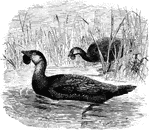
Two Musk Ducks Swimming between the Tall Grass in a Lake
Biziura lobata, (Musk Duck) of Tasmania and Australia -except the north-is brown with buff mottlings,…

Surf Duck
"Oidemia perspicillata. Surf Duck. Sea Coot. Adult male: Bill as above, singularly variegated in color,…

Trowbridge's Surf Duck
"Oidemia perspicillata trowbridgii. Trowbridge's Surf Duck, With the bill longer, exceeding the head,…
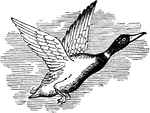
Wild Duck
"Anus boscas. Mallard. Wild or Domestic Duck. Green-head. Bill greenish-yellow. Feet orange-red. Iris…
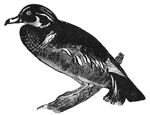
Wood Duck
These birds have webbed-feet, with heavy, oily plumage. the body is flattened, and all are fine swimmers.
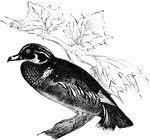
Wood Duck
"Aix sponsa. Wood Duck. Summer Duck. "The Bride." Adult Male: Bill pinkish-white, with lake-red base,…

Pin-tail Ducks
"Dafila acuta. Pin-tail Duck. Sprig-tail. Bill black, with grayish-blue edge of upper mandible; feet…

Eagle Cochlea
"Cochlea, X3. a, external, b, internal, cartilaginous prism; c, membranous zone; d, saccular extremity…

A Section of an Eagle's Cochlea
"Section of the cochlea, X3. a, vestibular surface of external cartilaginous prism, extending into d,…

The Inner Ear of a White-tailed Eagle
"Membranous labyrinth of Haliaetus albicilla (White-tailed Eagle), X2. a,b, cochlea; b, its saccular…
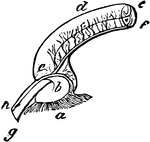
Eagle's Ampulal
"Part of the superior vertical semicircular canal, showing its ampulla (which is the dilatation of the…

The Inner Ear of an Eagle
"Membranous labyrinth of Haliaetus albicilla (White-tailed Eagle), X2. a,b, cochlea; b, its saccular…
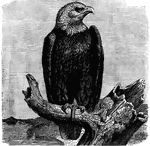
Bald or White-headed Eagle (Haliaetus Leucocephalus)
"Its flight is as powerful as that of the golden eagle, and its adroitness and strength are even greater.…

Bald Eagle
"Haliaetus leucocephalus. White-headed Sea Eagle. "Bald Eagle." "Bird of Washington". Adult: Dark brown;…

Scissors, Knives, and Forceps Used for Egg Blowing
"Fig. 6- scissors, knives, and forceps, 1/2 natural size." Elliot Coues, 1884 These items may be used…

Hooks Used in the Process of Egg Blowing for the Purpose of Extracting Embryos
"Figure 7-hooks for extracting embryos, natural size; a,b,c, plain hooks; d, bill-hook, having cutting…
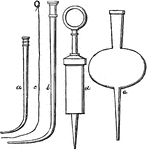
Several Special Instruments Used in the Process of Egg Blowing
"Figure 5-Instruments for blowing eggs; a,b, blow-pipes, 1/2 natural size; c, wire for cleansing them;…
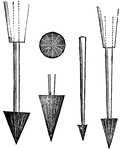
Egg Drills are Special Tools Used for Preparing and Blowing Eggs
"Figure 4 - egg-drills, different sizes. Steel implements with a sharp-pointed conical head of rasping…
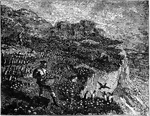
Murre's Eggs
A man is gathering Murre's eggs from their nesting cliff. Birds lay single eggs and eggs are elongated…

European Great White Egret
"Herodias. Great Egret Heron. Character of Ardea proper, excepting in plumage; color white; no crest;…
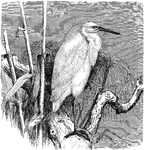
European Little White Egret
"Garzetta. Small Egret Herons. Color white; and occipital crest, and short recurved train of stiff-shafted…

Egyptian Noble Hunting Waterfowl
"Egyptian noble hunting waterfowl on the Nile with the "throwstick' (a boomerang). The birds rise from…

The Bill of an Eider
"Somateri mollissima. Somateri dresseri. Common Eider. Bill gibbous at base of upper mandible; outline…
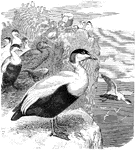
Eider Ducks
"Somateria mollissima. European Eider Duck. Bill with lateral frontal process extending on each side…
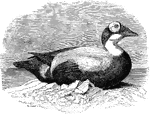
Spectacled Eider
"Somateria fischeri. Spectacled Eider. Bill (in both sexes) peculiar in the extension upon it of dense…
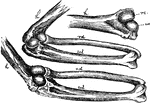
Mechanism of the Elbow-Joint
"Fig. 28. - Mechanism of elbow-joint. ..., where rc and uc show respectively the size, shape, and position…
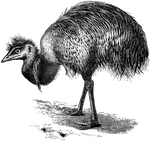
Emeu
An Emeu "Dromaeus novae-hollandiae, of the interior Eastern Australia, which extended in times past…
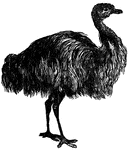
Emu
The Emu, a native of Australia, is nearly as large as the Ostrich, but has shorter legs and neck and…
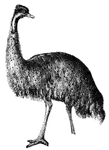
Emu
The Emu, a native of Australia, is nearly as large as the Ostrich, but has shorter legs and neck and…

Falcon
Falcons are a group of birds of prey that vary in size from the falconet to the gyrefalcon. They can…
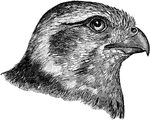
Prairie Falcon Head
"Falco mexicanus. American Lanner Falcon. Prairie Flacon. A medium-sized species, distinguished from…
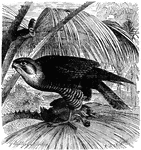
Red-Necked Falcon, or Turumdi (Falco Chiquera)
"The falcons, it may be said, realize the ideal of a bird of prey. They feed only on living animals,…

Falcons
"Falcons. Bill furnished with a sharp tooth and notch near the end of the cutting edge of the upper…
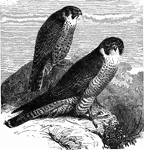
Two Lanner Falcon
"Falco mexicanus. American Lanner Falcon. Prairie Flacon. A medium-sized species, distinguished from…

Two Peregrine Falcons
"Falco peregrinus. Peregrine Falcon. Duck Hawk. Great-footed Hawk. A medium-sized falcon, about as large…

Peregrine Falcon Small
"Falco peregrinus. Peregrine Falcon. Duck Hawk. Great-footed Hawk. A medium-sized falcon, about as large…

Structure of a Feather
"Fig. - 20 - Two barbs, a, a, of a vane, bearing anterior, b, b, and posterior, c, barbules; enlarged;…

The Bill of a Purple Finch
"Carpodacus. Purple Bullfinch. Bill smaller and less turgid than in Pinicol or Pyrrhula, more regularly…
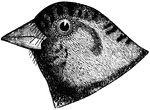
Brandt's Rosy Finch
"Leucosticte griseinucha. Brandt's Rosy Finch. Like the littoral variety of tephrocotis, in having the…

Bull Finch
A well known English bird, known as the coal-hood, the hoop, or the tony hoop, the alp, and the hope.
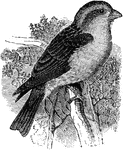
Purple Finch
"Carpodacus purpureus. Purple Finch (better Crimson Finch). Rose-red, paler below, insensibly whitening…

Seaside Finch
"Ammodramus maritimus. Seaside Finch. Olive-gray, obscurely streaked on back and crown with darker and…

Swainson's Rosy Finch
"Leucosticte tephrocotis. Swainson's Rosy Finch. Gray-crowned Rosy Finch. Sexes similar. Adult in breeding…


